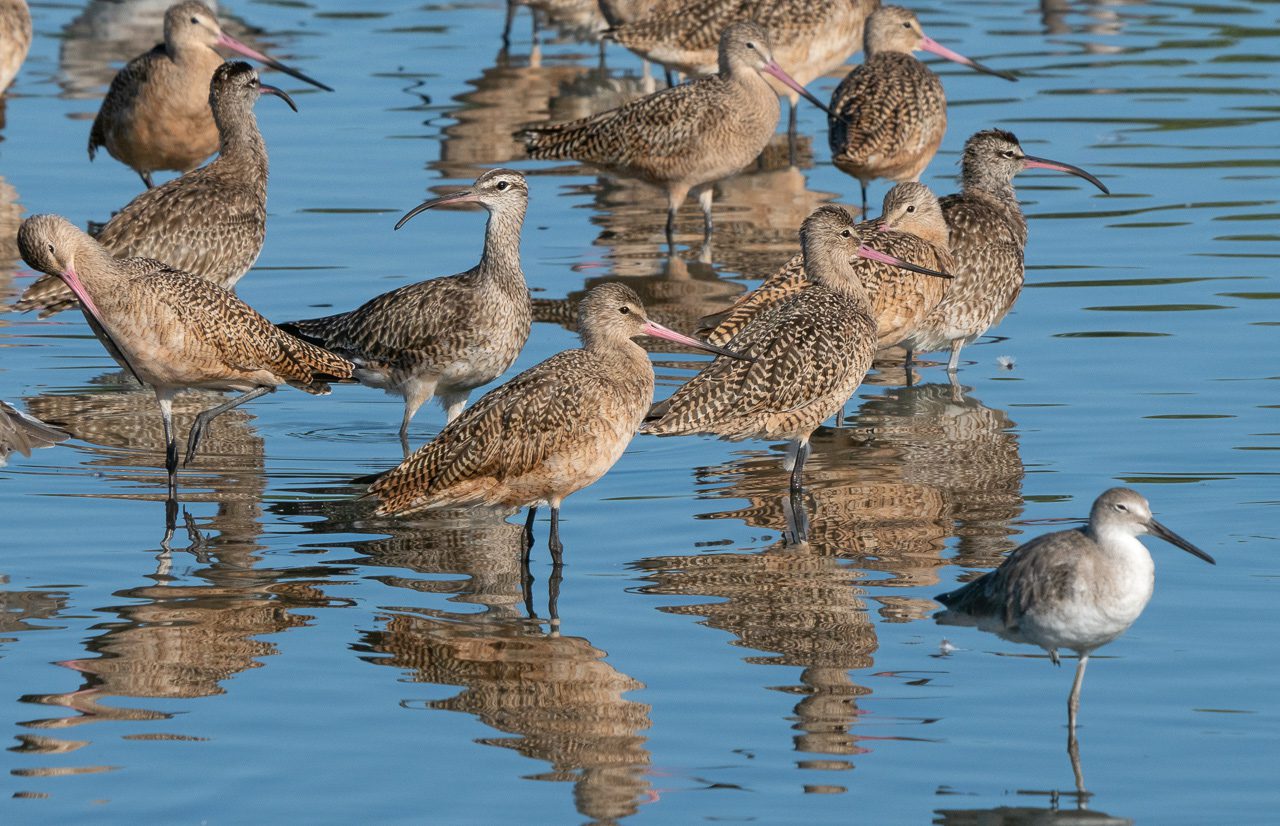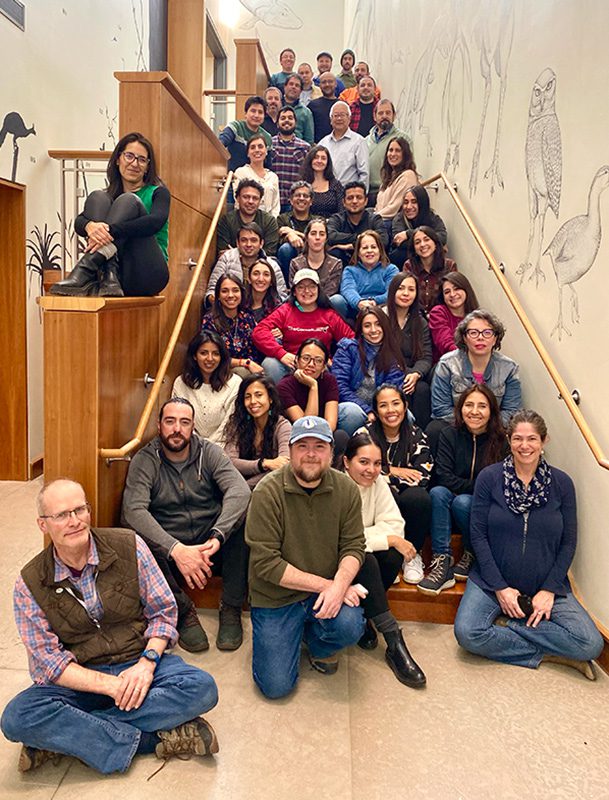
From the Spring 2023 issue of Living Bird magazine. Subscribe now.
I often write this column early in the morning in my office, looking out over Sapsucker Woods. Immediately next door is a conference room, from which I often try to guess the nature of the meeting from the sounds that emanate—the murmur of scientific debate, animated chatter about a new discovery or idea, and sometimes raucous peals of laughter. This morning in late February has been a mixture of all three, and all in Spanish. The Coastal Solutions Fellows are in town.
Every year, the Cornell Lab of Ornithology’s Coastal Solutions Fellows Program brings together early-career leaders from across the academic, private, and nonprofit sectors. These cohorts combine their collective skills to find novel solutions for coastal ecosystem management that can address the ongoing declines among shorebird populations along the Pacific Americas Flyway. This year’s Fellows are an extraordinary group of ornithologists, architects, engineers, producers, and social scientists from across Latin America. In February, three cohorts were visiting at the same time, so there were more than 45 people coming together at Sapsucker Woods who range from Mexico and Guatemala to Chile and Peru, and nearly every country in between.
The atmosphere was electric. It’s been both inspirational and humbling to spend a few days with them, hearing what they have found it takes to have impact on some of the most urgent conservation challenges on the planet.
Although the details vary across project sites, the general message is consistent. To be successful, the projects need to be community-led, take an interdisciplinary approach that is as much about people as nature, and provide sustainable economic opportunity as well as conservation benefits. Solutions that lift local economies and achieve conservation can be a powerful combination, as illustrated by this issue’s essay, Costa Ricans Join Hands to Cultivate a Quetzal Community, in which a collective of local farmers, tourist lodges, and birdwatchers in the Proyecto Kabek Familias Pro-Quetzal has not only protected the forests in which Resplendent Quetzals live, but developed sustainable farming and tourist industries.

During the recent gathering of the Coastal Solutions Fellows, I was asked: “What’s the role of the Lab in the Global South? Are you going to open an office in Latin America?” It’s a topical question, especially as just a few days earlier a group of Latin American ornithologists published a pair of papers in the scientific journal Ornithological Applications illustrating the barriers that scientists from the Global South face in developing their careers, and suggesting ways to break these walls down. The papers provide a thought-provoking analysis, with several Cornell Lab programs highlighted as needing to do more.
For organizations like the Cornell Lab to have greater impact, we need to work more closely with local partners, listen to their needs, and support them to the very best of our abilities, rather than open new offices around the world. We have a potent mix of expertise across technology, scientific analyses, citizen science, and storytelling, but it is always at its most powerful when supporting community-led initiatives. Prime examples include the amazing bird monitoring programs in India, Mexico, Colombia, Costa Rica, Argentina, and Chile that use eBird and Merlin as technology platforms; our capacity building partnerships with local institutions in Latin America, Africa, and Asia; and of course, the Coastal Solutions Fellows program itself. We’re also making progress on accessibility, with eBird and Merlin now available in 35 and 16 languages, respectively, with more to come. But it’s clear we have much more to do, especially in opening up career opportunities, building capacity in cutting-edge technologies like bioacoustics and population analyses, and making major academic resources like the Birds of the World ornithological research platform freely available in multiple languages.
I look forward to a future where the Cornell Lab is buzzing with visitors and languages from around the world, but more importantly we are working in deep partnership to enable local communities and partners wherever they can have the greatest impact.
Ian Owens is the executive director of the Cornell Lab of Ornithology.

